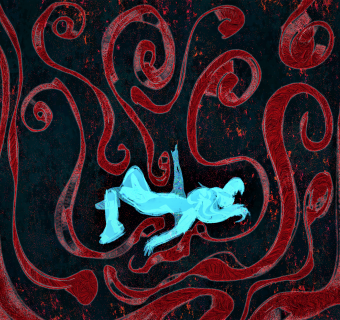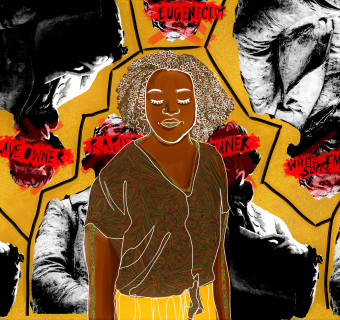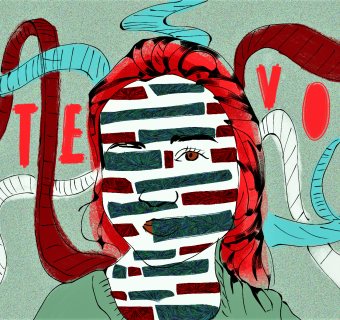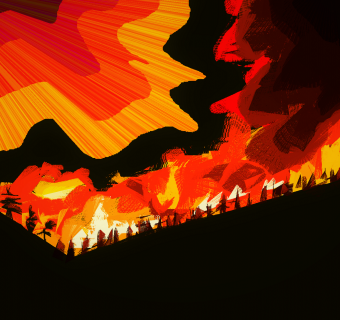Story by Kimia Nikseresht
Just a few months ago, three young people were shot in the head in their home near the Chapel Hill campus of the University of North Carolina. Their shooter was a neighbor who claimed that his act of violence was due to frustrations over an on-going parking dispute. All three of the victims were students. All three were Muslims. Two were women, who chose to wear the Hijab. While not all incidents of hate escalate to murder, anti-Hijab sentiments are quite common in the post-9/11 United States. In an interview with U.Va. Today, Farzaneh Milani, renowned author and professor in the Women and Gender Studies and Middle Eastern Studies departments at U.Va., recalls walking into a classroom wearing the veil, in order to make a point to her students - as a society, we have developed an unhealthy obsession with the veil that prohibits us to see beyond it. Her students’ response was eye-opening: she was greeted with pure silence. When she asked her class why they were so quiet, she finally got her answer. One student blurted out, “we are scared… You might be carrying a gun under your veil”. Milani explains, “I had ceased to be the teacher [my students] knew so well. I had become an image - a gun-toting, menacing woman. I have to admit, never before had I experienced firsthand the boundless power of stereotypes”.
While violent, headline-worthy incidents are rare, encounters with painfully explicit expressions of prejudice are dishearteningly common in the United States today. In fact, a study published in Making Connections: Interdisciplinary Approaches to Cultural Diversity, titled “Gender Identity and the Religious Practices of First-Generation Muslim Women Immigrants in the U.S.” shows that 85% of those interviewed could recount one or more blatant incidents of public humiliation, shaming, and threats. These can be physical, or mental and psychological. Attiya Latif, a second year at the University of Virginia, has a story to tell that is unique to her own experience, but consistent in its implications. She recalls opening a surprise note in her 10th grade locker, where she found written, “Go back to where you came from. Kill yourself. Terrorist. Love, Jesus” by an anonymous classmate. Latif empathizes with the many women who experience similar traumatic experiences that go unnoticed and unacknowledged. Micro-aggressions may not be as easy to spot or document, but they are powerful in keeping the women they target outside of exclusive circles and with very low self-esteems. They are often internalized as personal aggressions by the women who experience them and therefore not spoken about as a broader social issue of cultural prejudice against the hijab. Latif, on the other hand, is making sure her story is heard. The source of this aggression is not the religiosity or lifestyle of the targeted individual, but rather rooted in macro-politics. As Yvonne Haddad, a scholar of religious sociology explains in her article “The Post-9/11 Hijab as Icon”, which appeared in the Sociology of Religion journal, the Hijab in the post-9/11 world is no longer viewed as “a marker of piety and obedience to God, [but rather] it came to be seen as an affront and flaunting of an identity associated with those who have declared war on the United States”. Thus, hijab wearers are shamed not for the scarf itself, but rather for the misconception that the choice to wear the scarf is an explicit identification with terrorism and terrorists worldwide.
So, how are we dealing with these issues here at our university? Well, the climate at U.Va. is complex and often below the surface. U.Va. alum Hanan Yazid (CLAS ’13) explains, “I think U.Va. has a very welcoming and accepting culture,” as most of the people she had crossed paths with on Grounds were generally understanding of her decision to wear the hijab. She continues, “college and the professional field are two completely different worlds.” The professional world is where she began experiencing more direct manifestations of these negative attitudes. However, despite this supposed air of religious and cultural tolerance, misconceptions of the purpose of the hijab are still prevalent right here on grounds. Latif recalls walking past Scott Stadium, when she noticed she was being followed by a stranger, who later began yelling profanities directed at her. The space was public and the night was the anniversary of 9/11. She reported the incident to the administration, but her report was never followed up with. Over a year later, the report has still gone unaddressed. Yet even in cases where the hijab is not recognized as a symbol of threat and national security, it is instead associated with a system of oppression, controlled by a backward, patriarchal culture that oppresses all women through Islam. While certain regimes of majority Muslim people do utilize dictatorial politics to oppress their citizens, this is certainly not an accurate understanding of the role of the hijab, as it fails to explain why immigrants of these nations would continue to wear the hijab in the United States and Europe, where they are no longer susceptible to the iron-fist of those regimes. In reality, the decision to wear the hijab is often a deeply personal one, and an inherently feminist act. Hanan explains, “the hijab is often misconstrued as a product of the ‘patriarchal nature of Islam’, and thus veiled women need to be liberated and saved…Frankly, liberation lies in the freedom of choice, and not in what a woman wears”. Attiya adds, “Hijab allows me to embody this idea that I am no longer a sexual object, but rather, I’m a human being and I have a voice”. Both of these women wear the hijab. Both are feminists. Both have a story to tell – a story that is not defined by the clothes that they choose to wear. Update: In the wake of the violent attacks in Paris, it is now more important than ever to recognize the civilian rights of those who identify with Islam. While terrorism and violence are never justified, the distinction between fundamentalism and civilian rights is absolutely crucial in ensuring the safety and fair treatment of Muslims, and Muslim women in particular. The memories of the lost lives of the victims will live on.






